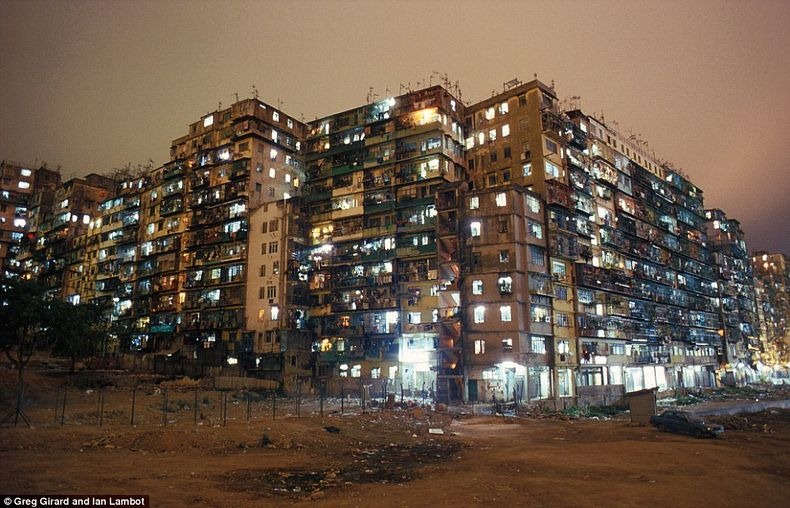Kowloon Walled City, a Population Density Nightmare
Kowloon Walled City was a largely ungoverned Chinese
settlement in Kowloon, Hong Kong, comprising of 350 interconnected
high-rise buildings where 33,000 residents lived within a plot measuring
just 210 meter by 120 meter. Originally a Chinese military fort, the
Walled City became an enclave after the New Territories were leased to
Britain in 1898. Its population increased dramatically following the
Japanese occupation of Hong Kong during World War II and reached a peak
of 33,000 residents in 1987. When it was demolished in 1993-94, it was
thought to be the most densely populated place on earth.
The
roughly 350 buildings that stood inside the Walled City were built with
poor foundations and few or no utilities. The construction was so dense
that sunlight didn't filter down to the lower levels, which were lit by
fluorescent lights. Because apartments were so small, space was
maximized with wider upper floors, caged balconies, and rooftop
additions. Roofs in the City were full of television antennas,
clotheslines, water tanks, and garbage, and could be crossed using a
series of ladders.




Mir
Lui was assigned to work in the city as a postman in 1976 and had no
choice but to go. He was one of the few people who knew the ins and outs
and wore a hat to protect him from the constant dripping





Food
processors admitted they had moved into the city to benefit from the
low rents and to seek refuge from the jurisdiction of government health
and sanitation inspectors

A
workplace during the day would turn into a living room at night when
Hui Tung Choy's wife and two young daughters joined him at his noodle
business. The children's play and homework space was a flour-encrusted
work bench

Grocery-store
owner Chan Pak, 60, in his tiny shop on Lung Chun Back Road. He had a
particular passion for cats and owned seven when this picture was taken

Law
Yu Yi, aged 90, lived in a small and humid third-floor flat with her
son's 68-year-old wife off Lung Chun First Alley. The arrangement is
typical of traditional Chinese values in which the daughter-in-law looks
after her inlaws

A
Kowloon Walled City resident who is dissatisfied with compensation
payouts from the government sits on a pavement in protest as police
start the clearance operation

Daylight
barely penetrates the rubbish-strewn grille over the city's Tin Hau
Temple which was built in 1951 on an alley off Lo Yan Street




